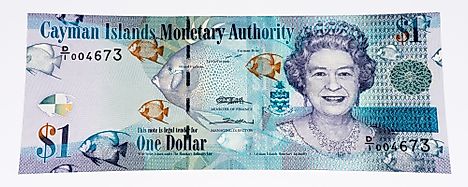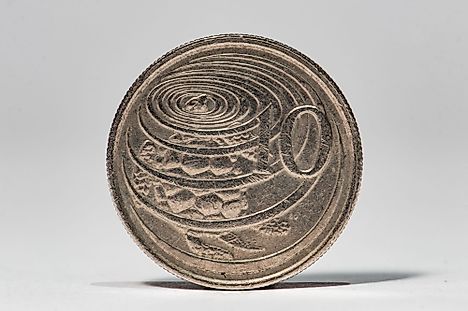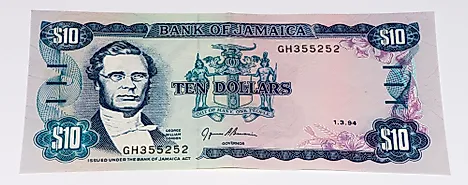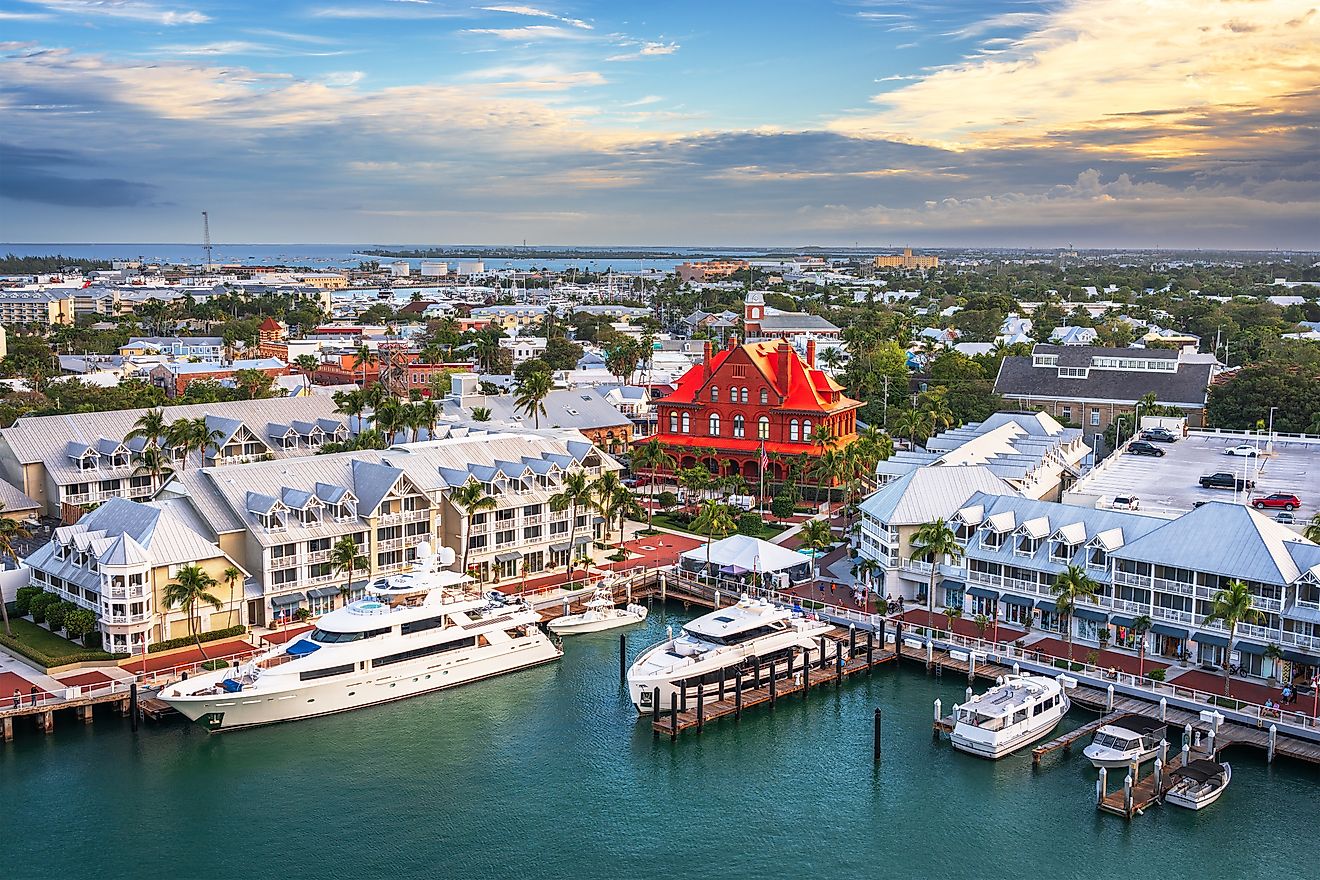Flags, Symbols, & Currencies of Cayman Islands
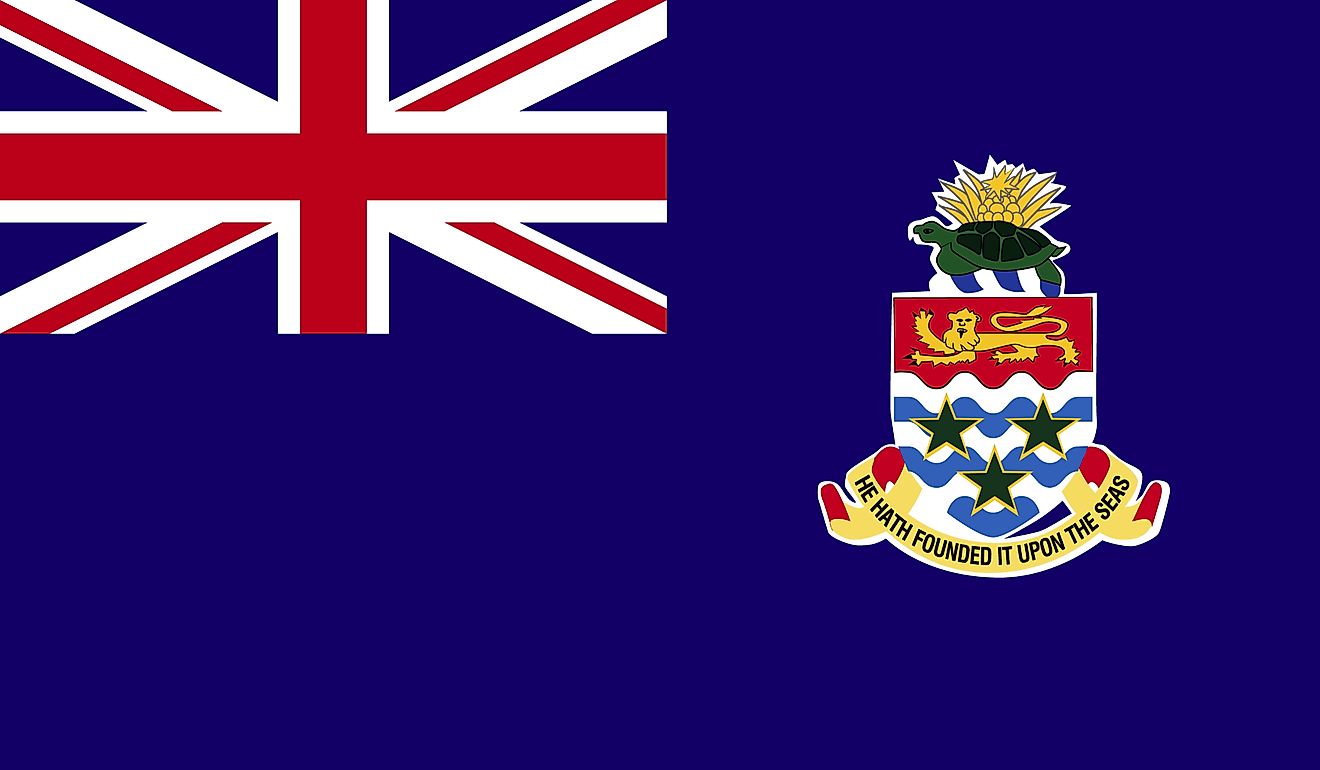
The flag of the Caymans was officially adopted on May 14, 1958, as a replacement of the British flag. As a British dependent territory the island's flag features some elements of the flag of the United Kingdom. The flag consists of a blue field with the flag of the UK in the upper hoist-side quadrant and the Caymanian coat of arms centered on the outer half of the flag. The coat of arms includes a crest with a pineapple, representing the connection with Jamaica, and a turtle (representing Cayman's seafaring tradition) above a shield bearing a golden lion, symbolizing Great Britain, below which are three green stars (representing the three islands) surmounting white and blue wavy lines representing the sea; a scroll below the shield bears the motto HE HATH FOUNDED IT UPON THE SEAS.
History of the Flag
Cayman Island has been unnder the British control since 1670, following the Treaty of Madrid in 1670. The islands was officially declared a Crown colony of Jamaica on June 22, 1863, and eventually became an independent Crown colony in 1962. As a Crown colony, Cayman Islands has always flown the British flag (Union Jack). However, in 1958, the region adopted a new flag featuring the Blue ensign and national coat of arms on a white disc. This flag was used until 1999 when the white disc was removed and arms' size doubled.
Symbols of Cayman Islands
National Coat of Arms of Cayman Islands

The Cayman's coat of arms features a shield, crested helm, and the islands' motto. The shield consists of the Lion of England on the upper red field and features three green stars on the lower white and blue field. The lion represents Great Britain and the stars represent the three main islands. The blue and white wavy lines represent the sea. The coat of arms is topped by a turtle on a blue and white coil rope and golden pineapple behind it, representing the indigenous fauna and flora. Below the shield is a ribbon with the motto" He hath founded it upon the seas, derived from Psalm 24.
National Anthem
- Anthem Title: Beloved Isle Cayman (National song) God Save the Queen (National Anthem)
- Music composer and Lyricist: National song (Leila Ross-Shier) National anthem (unknown)
- Date of Adoption: 1745 (national anthem)
Cayman Islands has an official national song and an official national anthem. Being a British Overseas territory, the official national anthem is God Save the Queen/King. Although the author of the anthem is unknown, the song was adopted as the Royal anthem in 1745. Interestingly, England has no official anthem and God Save the Queen is only considered its national anthem during international events such as sports.
Besides the national anthem, Cayman Islands has official national song, which many consider as the national anthem. The national song, Beloved Isle Cayman, was written and set to music by Leila Ross-Shier. She composed the song in 1930 and often played it alongside her guiter before it was finally adopted as the national song.
God Save the Queen (British National Anthem)
God save our gracious Queen!
Long live our noble Queen!
God save the Queen!
Send her victorious,
Happy and glorious,
Long to reign over us:
God save the Queen!
O Lord our God arise,
Scatter her enemies,
And make them fall:
Confound their politics,
Frustrate their knavish tricks,
On Thee our hopes we fix:
God save us all.
Thy choicest gifts in store,
On her be pleased to pour;
Long may she reign:
May she defend our laws,
And ever give us cause,
To sing with heart and voice,
God save the Queen!
The Currency of Cayman Islands is the Cayman Islands dollar
Although Cayman Islands is an overseas territory of the United Kingdom, its official currency is the Cayman Islands dollar. The currency was adopted in 1972 as a replacement for the Jamaican dollar. The currency is abreviated as CI$ to distinguish it from other dollar currencies.
Coins and Banknotes
The first Cayman Islands dollar coins were issued 1972 and were in various denominations, including 1¢, 5¢, 10¢ and 25¢. The coins were struck in cupronickel and bronze. These coin denominations have been in use to date. The first banknotes were also introduced in 1972 in the same denominations as coins. 100 and 50-dollar notes were introduced in 1982 and 1987 respectively. The banknotes in circulation are in the denominations of 1, 5, 10, 25, 50, and 100 dollars.
Historical Currencies of Cayman Islands
The history of currency in Cayman Islands is tied to that of Jamaica and British West Indies. When the British took control of the Islands, they introduced the British sterling coinage as was in other colonies. Most of these sterling coinage were used until the Islands became a Crown colony of Jamaica in 1863 and adopted the Jamaican pound. The Jamaican pound circulated as a mixture of the local issues and British currency. The Jamaican pound was replaced by the Jamaican dollar in 1969 and Caymans continued to use the new currency until 1972, although it had separated from the Colony of Jamaica in 1962.
